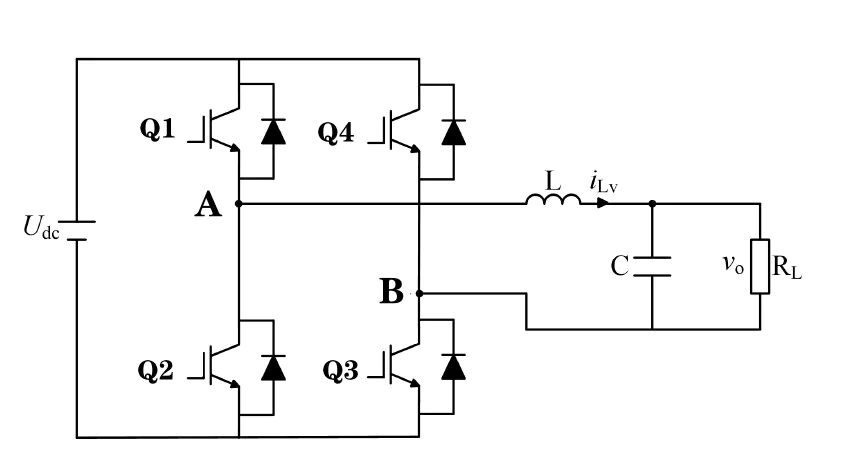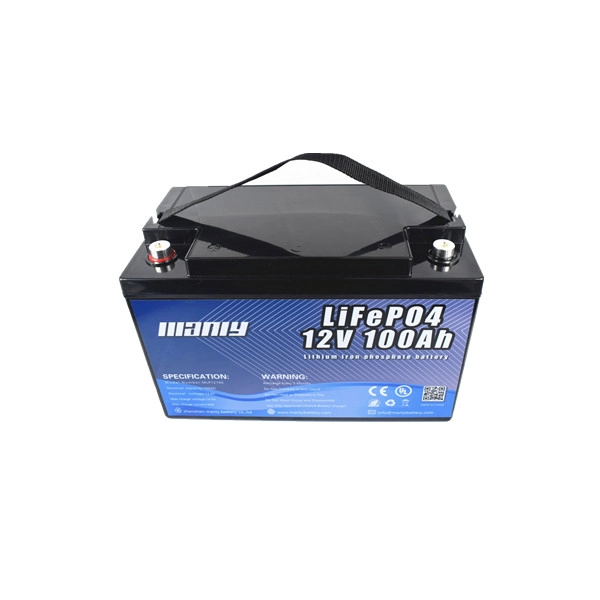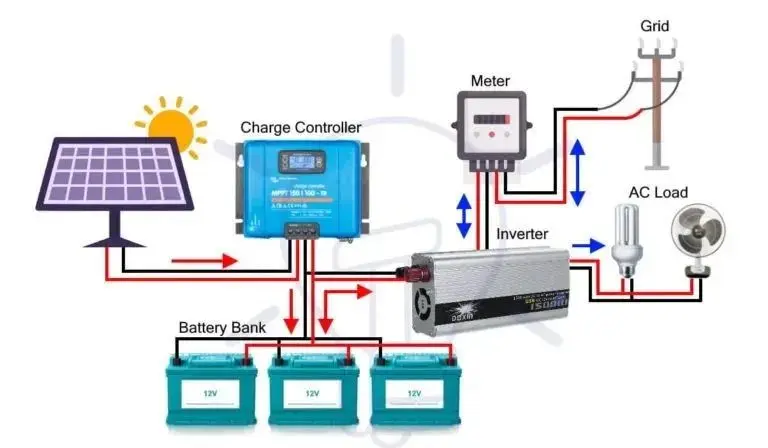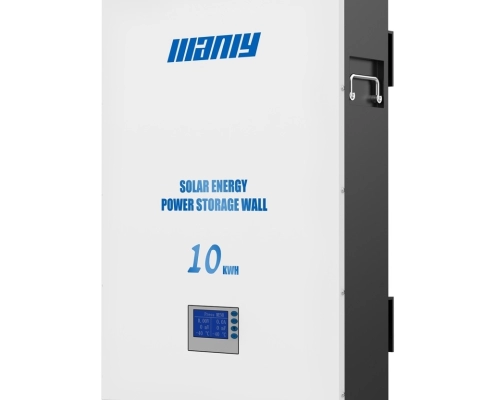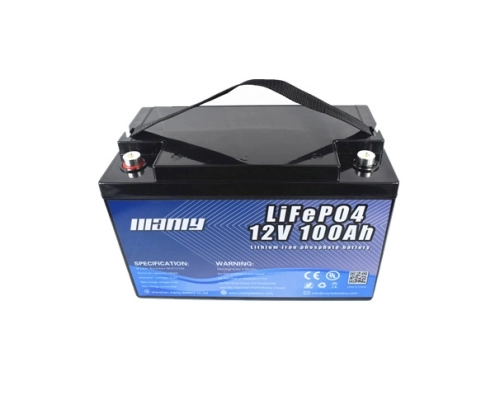Inverter Size Calculator: How to Use and Interpret
When considering the compatibility of a 100Ah lithium battery with a 1000W inverter, the Inverter Size Calculator becomes a crucial tool. It’s designed to accurately assess your system’s needs, helping you determine the maximum inverter size your 100Ah battery can handle. This is based on your battery voltage, inverter efficiency, and power factor, ensuring you don’t overload your battery.
What Can You Calculate with This Tool?
Maximum Inverter Size: Input the battery voltage, inverter efficiency, battery capacity, and power factor, and the calculator will give you the maximum inverter size that your battery can support. This ensures you use an inverter that matches your battery’s capabilities and avoids overloading it.
Ensure Compatibility: For those unsure about what inverter to choose for their setup, this versatile calculator offers an easy way to determine whether your current 100Ah battery is sufficient or needs a larger inverter. You can optimize your energy use by adjusting the values based on your unique battery setup, ensuring that the calculator caters to your specific needs.
How It Works
Battery Voltage (V): Enter your battery’s voltage (e.g., 12V, 24V). The calculator uses this to determine the total energy available from your battery.
Inverter Efficiency (%): Your inverter’s efficiency rate indicates how much energy is actually used for powering your devices after conversion losses. Typically, this is around 80-95%. Inputting this ensures a more realistic calculation.
Battery Capacity (Ah): The default is 100Ah, but you can change this value based on your battery capacity. This value represents how much energy your battery can store.
Power Factor: This is important when considering AC loads. It accounts for how efficiently the inverter supplies power to the connected appliances. For most devices, a power factor of 1.0 is standard.
Once these values are entered, the calculator will determine the maximum inverter size based on the available energy and efficiency. This ensures you avoid selecting an inverter that exceeds your battery’s capabilities.
For further assistance and detailed information, please visit our website and contact our expert customer service at MANLY Battery Contact Us.
Understanding Inverter Basics
1. Explain What an Electric Inverter Is and Its Function
An electric inverter is a device that converts direct current (DC) into alternating current (AC). This is important because many household appliances and electronic devices run on AC power. The purpose of a power inverter is to make it possible to use these devices with a DC power source, such as a battery or solar panel.
Inverters use a combination of electronic components to change the flow of electricity. They take the DC power, usually from a battery, and use it to create AC power. This AC power can then be used to run various devices like TVs, computers, and even kitchen appliances. The main parts of an inverter include the inverter bridge, control logic, and filtering circuit.
For example, if you have a 12V battery, the inverter can convert this 12V DC into 120V AC, the standard voltage for household outlets in the United States. This allows you to use your battery to power devices typically plugged into an AC outlet.
In electrical terms, an inverter is a device that changes direct current (DC) to alternating current (AC). This conversion process involves an alternating current inverter system that utilizes several key components, including the inverter bridge, control logic, and filtering circuit.

2. Brief Overview of Different Types of Power Inverters for Homes
There are several power inverters for homes, each designed for different applications and needs. Here are some common types:
- Pure Sine Wave Inverters: These provide a smooth and consistent wave of electricity, similar to what you get from the power grid. They are ideal for sensitive electronics like computers and medical equipment.
- Modified Sine Wave Inverters: These are simpler and cheaper than pure sine wave inverters but produce a less smooth electrical wave. They are suitable for less sensitive devices such as power tools and household appliances.
- Grid-Tie Inverters: These solar power systems are designed to feed electricity back into the grid. They help reduce electricity bills by allowing homeowners to use solar power during the day and grid power at night.
- Portable Inverters: These are small, lightweight inverters that can be used for camping, in cars, or emergencies. They are perfect for charging small devices like phones and laptops.
- Hybrid Inverters: These inverters can work as standalone and grid-tie inverters. They are versatile and can be used in various applications, including solar power systems.
A power inverter allows the use of a wide range of devices with different power needs, whether you are at home, on the road, or off the grid. Understanding the various types of inverters and their uses can help you choose the right one for your needs.
For instance, a 1000 watt inverter is a versatile choice for many home applications. It can power several household devices, such as a TV or a small refrigerator, as long as the total power consumption does not exceed 1000 watts. This makes it a practical choice for a wide range of needs.

Components of an Inverter
The main components of an inverter play crucial roles in its operation. These include the DC input, which is the battery or solar panel; the inverter bridge that switches the DC to AC; and the output, where the AC power is supplied to the devices. The control logic ensures that the inverter operates efficiently, and the filtering circuit smooths out the AC output to make it usable for all devices.
How Does an AC Inverter Work
An AC inverter converts the battery’s DC power into a high-frequency AC signal. This signal is then transformed into the desired voltage using a transformer. Finally, the high-frequency AC is converted back to a lower-frequency AC that matches the household power grid, usually 60Hz, in the United States. This process ensures that the output from the inverter is compatible with standard household appliances.
Inverter Applications
Inverters are used in many applications, including solar power systems, which convert the DC power from solar panels into AC power for home use. They are also used in off-grid systems to provide power in remote locations and emergency power systems to provide backup power during outages. Electricity inverters are also standard in RVs and boats to provide power for appliances and electronics while on the move.
In conclusion, an electric inverter is crucial for converting DC to AC power, making it possible to use various electronic devices with different power sources. Many inverters are available, each suited for other applications, ensuring you can find the right inverter for your needs. Understanding the basics of how inverters work and the types available can help you decide when to choose the right inverter for your specific needs.
Will a 100Ah Lithium Battery Run a 1000W Inverter?
Understanding whether a 100Ah lithium battery can run a 1000 watt inverter requires examining the compatibility and practical scenarios where this setup is adequate.
1. Compatibility of a 100Ah Lithium Battery with a 1000 Watt Inverter
To determine if a 100Ah lithium battery can power a 1000 watt inverter, we must understand the relationship between the battery’s capacity, voltage, and power demand. A 100Ah lithium battery provides 100 ampere-hours of current. If the battery voltage is 12V, the total energy capacity is:
12V×100Ah=1200Wh
A 1000 watt inverter needs 1000 watts of power per hour. To find out how long the battery can power the inverter, we divide the battery’s total energy by the inverter’s power demand:
1200Wh÷1000W=1.2 hours
This theoretical calculation shows that the battery can run the inverter for about 1.2 hours, but this is under ideal conditions. Factors such as inverter efficiency and battery discharge rates can affect this duration in real-world scenarios.
Inverter efficiency typically ranges from 70% to 90%. If we assume an 80% efficiency, the actual usable energy from the battery would be:
1200Wh×0.8=960Wh
So, the practical run time would be:
960Wh÷1000W=0.96 hours
Thus, with an 80% efficient inverter, a 100Ah lithium battery can run a 1000 watt inverter for approximately 0.96 hours, or just under 1 hour.
2. Examples and Scenarios
Let’s look at some practical examples where this setup might be used effectively:
- Camping or Outdoor Activities: If you’re using the battery to power lights, small kitchen appliances, or charging devices, the short run time might be sufficient. For instance, running a 1000W electric grill or a coffee maker for short periods can be pretty convenient.
- Emergency Power: In a power outage, a 100Ah lithium battery connected to a 1000 watt inverter can keep essential devices running. You could power a few lights, charge phones, or even briefly run a small refrigerator.
For example, in an emergency scenario, you might need to power multiple devices simultaneously. Let’s assume the following:
- LED lights: 100W
- Laptop: 50W
- Phone charger: 10W
The total power demand is:
100W+50W+10W=160W
Using the previous calculations, with the 960Wh usable energy:
960Wh÷160W=6 hours
In this scenario, your 100Ah lithium battery could power these devices for about 6 hours. This setup is convenient for short-term use during power outages.
In conclusion, while a 100Ah lithium battery can run a 1000 watt inverter, the duration is limited to less than an hour under realistic conditions. This setup is most effective for short-term or emergency uses. When planning to use such a configuration, it’s crucial to account for the efficiency of the inverter and the actual power needs of your devices to ensure reliable performance.
Can I Run a 2000W Inverter with a 100Ah Battery?
1. Examine the Feasibility of Using a 2000W Inverter with a 100Ah Lithium Battery
We must first examine the power requirements and capacity to understand if a 100Ah lithium battery can power a 2000W inverter. A 100Ah lithium battery at 12V provides:
12V×100Ah=1200Wh
A 2000W inverter demands 2000 watts of power per hour. To find out how long the battery can run the inverter, we divide the battery’s total energy by the inverter’s power demand:
1200Wh÷2000W=0.6 hours
This theoretical calculation shows the battery can run the inverter for about 0.6 hours, or approximately 36 minutes. However, this is under ideal conditions. Real-world factors like inverter efficiency and battery discharge rates will impact this duration.
Inverter efficiency typically ranges from 70% to 90%. Assuming an efficiency of 80%, the actual usable energy from the battery would be:
1200Wh×0.8=960Wh
So, the practical run time would be:
960Wh÷2000W=0.48 hours
Thus, with an 80% efficient inverter, a 100Ah lithium battery can run a 2000W inverter for approximately 0.48 hours, or just under 30 minutes.
2. Highlight the Limitations and Considerations for This Setup
While a 100Ah lithium battery can technically power a 2000W inverter, the duration is limited, making it impractical for continuous or long-term use. Here are some key considerations and limitations:
- Battery Strain: Running a 2000W inverter significantly strains a 100Ah battery, potentially reducing its lifespan. High power demands can cause the battery to heat up and degrade faster.
- Efficiency Losses: Inverters have efficiency losses. Low-frequency inverters typically consume between 50 and 100W of static power. Even without any load, a low-frequency inverter can drain the battery quickly. For example, with a static consumption of 75W, the inverter alone would consume 0.075Wh per hour. Over 10 hours, this could deplete a significant portion of the battery’s capacity.
- High-Frequency Inverters: High-frequency pure sine wave inverters are more efficient, with static power consumption around 8W. This makes them better suited for small off-grid systems. With a high-frequency inverter, the same 100Ah battery could last up to 100 hours on static load alone. With higher efficiency (up to 94%), the battery consumption is much lower during operation.
- Power Requirements: A 2000W inverter running at full capacity would consume more power than a 100Ah lithium battery can provide for a sustainable period. A larger capacity battery, such as a 200Ah battery, would be more appropriate for continuous use.
Practical Example
Consider a scenario where you need to power multiple devices. For instance:
- Refrigerator: 150W
- Laptop: 50W
- LED Lights: 30W
- Phone Charger: 10W
The total power demand is:
150W+50W+30W+10W=240W
Using the 100Ah lithium battery with a 2000W inverter, the runtime would be:
960Wh÷240W=4 hours
In this practical example, running multiple devices with lower power consumption can extend the battery life, but running a full 2000W inverter load is not feasible for long durations.
In conclusion, while a 100Ah lithium battery can technically run a 2000W inverter, the limitations in runtime and efficiency make it impractical for sustained use. It’s crucial to consider these factors and possibly opt for a higher capacity battery to ensure the battery’s and inverter’s reliable performance and longevity.

Installation and Safety Tips for a 1000 Watt Inverter
1. Step-by-Step Guide on How to Install a 1000 Watt Inverter
Installing a 1000 watt inverter involves several key steps to ensure safe and efficient operation. Follow this guide for a smooth installation process:
- Pre-Installation Check: Before starting, inspect the inverter for any damage that may have occurred during shipping. This ensures that you’re starting with a fully functional unit.
- Choose a Suitable Location: Select an installation site away from direct sunlight, heat sources, and moisture. The location should be well-ventilated to keep the inverter cool. Avoid placing it near other electronic devices to prevent interference. Ensure the site can support the inverter’s weight and allow enough space for ventilation and maintenance.
- Electrical Safety Measures: Cover the solar panels with opaque material before making any electrical connections or disconnecting the DC circuit breaker. This prevents dangerous voltages from being generated during installation.
- Mount the Inverter: Secure the inverter on a stable surface, such as a wall or a sturdy shelf. Ensure it is a few inches above the ground to protect it from potential water damage. Use appropriate mounting hardware to ensure it is securely attached.
- Connect the Battery: Position the battery close to the inverter to minimize voltage drop. Use cables with appropriate gauges and sound insulation. Connect the battery’s positive terminal to the inverter’s positive input and the negative terminal to the negative input.
- Connect the Solar Panels (if applicable): If using solar panels, connect them to the inverter following the manufacturer’s instructions. Ensure all connections are tight and secure.
- Ground the Inverter: Proper grounding is essential for safety. Use a grounding wire to connect the inverter’s ground terminal to a suitable grounding point.
- Final Checks: Before powering on, double-check all connections. Please ensure the wires are correctly and securely connected to prevent short circuits or other electrical issues.
2. Safety Measures, Including Proper Wiring and Avoiding Overloads
Ensuring safety during and after the installation of your 1000 watt inverter is crucial. Here are some essential safety measures:
- Professional Installation: While it’s possible to install an inverter yourself, it’s advisable to hire a professional with experience in inverter installations. This minimizes risks and ensures that the installation meets all safety standards.
- Use Insulated Cables: Use standard insulated wires to prevent short circuits and potential fire hazards. The cables should be of the correct gauge to handle the power load.
- Regular Maintenance: Conduct regular checks on the inverter and battery. Inspect the battery’s water level every three months and lubricate the terminals to prevent rust. Regularly clean the inverter and check the cooling fan to ensure it operates correctly.
- Avoid Overloading: Do not connect high-load appliances, such as refrigerators or motors, to the inverter. Overloading can damage the inverter and potentially cause power outages. Always check the power specifications of appliances before connecting them to the inverter.
- Monitor Static Power Consumption: Be aware of the inverter’s static power consumption. For example, a low-frequency inverter typically consumes between 50 – 100W when idle, while a high-frequency pure sine wave inverter consumes around 8W. This knowledge helps manage battery life more effectively.
- Follow Manufacturer Guidelines: Read all instructions in the inverter’s manual. This helps maintain the inverter’s warranty and ensures it operates safely and efficiently.
- Proper Ventilation: Ensure the inverter’s location is well-ventilated to prevent overheating. High temperatures can reduce the inverter’s efficiency and lifespan.
- Emergency Precautions: Keep spare fuses handy. Having replacements on hand can reduce downtime in the event of a fuse blowing. Always disconnect the inverter from the power source before replacing any fuses.
- Regular Inspections: Regularly check all connections and terminals for signs of wear or damage. Replace any damaged wires immediately to maintain safe and efficient operation.
By following these steps and safety measures, you can ensure a successful installation and long-term operation of your 1000 watt inverter. Proper installation and maintenance are key to maximizing the inverter’s performance and ensuring the safety of your electrical system.
Conclusion
In conclusion, while a 100Ah lithium battery can run a 1000 watt inverter, it is essential to understand this setup’s limitations and practical applications. The battery can power the inverter for about an hour under ideal conditions, making it suitable for short-term or emergency use. Regular maintenance and proper installation are crucial for safe and efficient operation. By considering factors like inverter efficiency and actual power needs, users can maximize the performance of their 100Ah lithium battery with a 1000 watt inverter, ensuring reliable power whenever and wherever it is needed.
